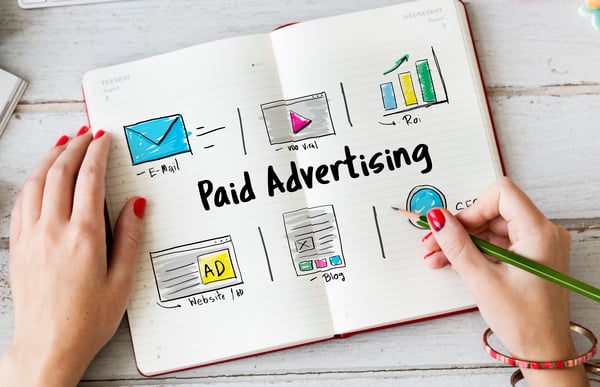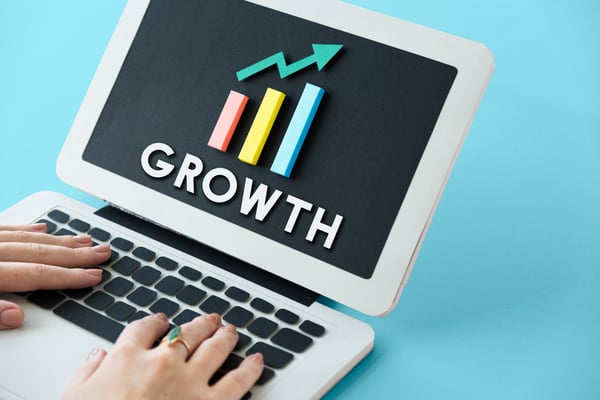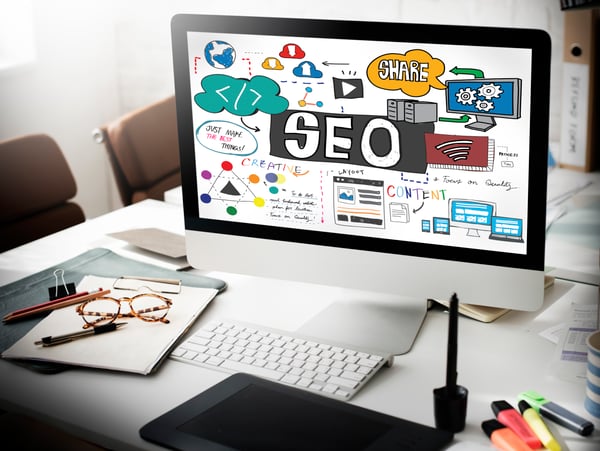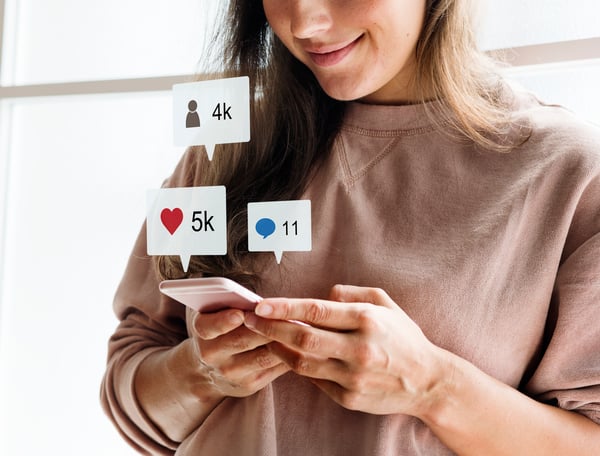
While browsing around, you may have already seen several ads of famous brands on Google, Instagram or even TikTok. What you probably don't know is that as an online marketer your brand can use the same paid traffic strategy as big retailers, who also pay for these digital media spaces to display paid ad campaigns for acquiring new customers.
One thing we can say: digital marketing has taken on incredible proportions and is an increasingly present topic in discussions about new businesses and how to increase results.
For new ecommerce entrepreneurs, there is a constant need to grow page visits and consequently make your website recognized, but at the same time, as a beginner, it is difficult to understand how to target people and get brand new clients.
With paid traffic, your goals can get closer and closer. Through this quick guide, you’re going to discover how to accelerate the results of your digital marketing strategies and achieve your next milestone. Let’s go!
🚨 New to ecommerce? Here are some articles that may help you:
- Start an Online Business in Canada in 7 Steps: A Definitive Guide
- 7 Digital Products to Sell Online in 2023 & How to Sell Them
- “Frost Yourself”: Learn How to Sell Jewelry Online
- How to Start a Dropshipping Business in 10 Easy Steps
What is paid traffic?

During your journey through the ecommerce universe you must have heard about social media marketing, paid search, paid traffic marketing and how to boost rates to an audience through small amounts of investment. It is true that much is said about this, but after all, what does paid traffic mean?
Traffic means all visits that are converted to your page through search engines, social media platforms and other forms of dissemination, while paid traffic is a way to boost traffic to your website through media networks on the internet.
That means you can pay several platforms to display your paid ad campaigns and prioritize your content to boost your website traffic, creating more chances for potential customers to see your products and know your business better. Sounds interesting, right?
Organic traffic vs paid traffic: what’s the difference?
First, you need to know that paid traffic and organic traffic are equally important to your business.
Organic traffic is any form of traffic to your website acquired without using paid traffic campaigns.
Using social media as an example, organic traffic is all the likes and visits that your Instagram profile received without you promoting your photos or videos. It’s extremely important as a thermometer, to know if your audience is enjoying your products and content while interacting with your page.
On the other hand, paid traffic is a way of promoting this content marketing strategy and products to a bigger target audience, with an investment that allows you to lead this content to a more specific purpose.
If your content has good results in organic traffic, it is very likely that it will also have good results in paid traffic; after all, nobody wants to see bad content, even if it is sponsored.
But when we talk about organic traffic and marketing strategies like SEO, we need to know that it takes time for your objectives to be completed with your effort being the main investment, unlike paid traffic, which works in the same way as other media: you pay for the placement so more people are exposed to your paid ad.
Is paid traffic worth it?
That's a question often asked by business owners, but we can assure you that, if used correctly, a good paid traffic strategy will make your business get results faster than just using content marketing strategies and other organic optimizations.
Through a paid advertising strategy, you can better understand your target audience behavior and define your audience more precisely than through organic traffic, creating personalized paid campaigns for your target.
The great advantage of the paid traffic sources is the possibility of segmenting your audience to choose who your potential client is, as well as where, when and how they will receive your paid advertising.
That way, you can customize your paid ads and focus on the platform and who is actually interested in engaging with your ads or buying your products. If your audience is on Google and not on Pinterest, you already know where to invest your money, right?
With paid ads, you'll be able to increase your marketing funnel and customer journey, showing your company's image to more people interested in what you have to offer. The more people who know about your brand, the more likely potential customers are to make a purchase.

5 benefits of paid traffic marketing
1. Increase your brand awareness through digital advertising
One of the advantages of this exposure is that now your brand will be more recognized in the market, making users relate certain products to your business.
Paid ads have the potential to reach thousands of people for a small budget, and the most famous paid traffic sources have the option to build campaigns based on brand awareness.
Can you imagine the effect of your ads being displayed everyday to a huge audience? So that's a great opportunity to build a reputation for your brand. Make sure your ads target users interested in what you offer and try to create a relationship with this audience.
2. Drive traffic to you page and receive more website visitors
The number of visits is one of the key indicators of your website's success, both for selling your products and for your brand. Increasing your traffic boosts your sales strategy and, consequently, can add profits to your earnings.
3. Generate conversions from website traffic
A customer's journey within your ecommerce is not linear. They need to have multiple points of contact with your brand before they consider making a purchase, so constantly bringing them to your website and investing in paid ads as a remarketing strategy are great options to convince your visitors.
4. Huge potential rewards from a small investment
It is true that digital media spaces are much cheaper than advertising on television or other more traditional channels. With a little research and effort, you can reach many more people with a budget that works for your business. Paid ads help small businesses to pave their way in advertising, after all, not everyone has the budget to show their products unlimitedly on television.
5. Target people who are really interested in your product or service
In addition to being able to increase your reach, the vast majority of platforms offer ways to segment your ad to your target audience, through age, gender, location and interests. Large platforms are already able to identify your tastes and qualify products you want to see through machine learning. Sometimes the internet knows us better than we do.
First steps to drive traffic to your page

Discover your target audience
Before starting your first paid ad campaign, you need to understand which audiences can become your new customers. They will be the main target of your paid traffic campaigns.
Try to discover data such as age, gender, age group and even where they live and their habits. This will be very important so that in the future you can further optimize your campaigns, spending much less money to create high-quality traffic and sell much more.
Plan your marketing budget
It doesn't matter if you are already a consolidated brand or are starting your career in digital marketing: planning your budget is essential for your success. Understand how far you can invest and how much return it will bring you in the medium, short and long term. Just because paid ads are cheaper doesn't mean you can use them without control!
In addition, within the paid traffic platforms you can program several different campaigns and plan different budgets for each marketing objective. Understanding what is most important for your business in the big picture is extremely important to define the most appropriate strategy.
Choose the best paid traffic sources for your digital marketing strategy

Based on what you already know about your budget and your customers, you can now use the information to decide the best platform for your paid traffic goals. Make sure to choose the platform with the best advertising options and ad types that will suit your goals.
Surely you already know some of them, but it doesn't hurt to remember a little about each ad network.
1. Google Ads
I'm sure you've already googled a product you wanted, so you know it's almost impossible to explore the ecommerce universe without using a single resource from this platform.
Google is the biggest of the search engines and traffic sources. With Google you can display your ads through a variety of ways when your potential customer is searching for something or navigating on other websites.
Through Google Ads, it is possible to drive paid traffic to your website, create advanced campaigns to get more phone calls or increase visits to your store with:
- Display Ads (google display network is filled with banner ads that are present in many websites);
- Search Ads, while researching for something in a Google search platform;
- Shopping Ads (extremely important for merchants to show their inventory);
- Video Ads;
- App Ads, if what you want to sell is a digital product.
2. Facebook & Instagram Ads (Meta)
Another source that took proportions in the paid traffic market is Meta (Facebook and Instagram Ads). Social media platforms became potential marketplaces where it’s possible to buy and sell goods. Facebook and Instagram are a great example of this!
Through these platforms, you can program paid traffic for all Facebook products such as ads for feed and stories, in addition to promoting products directly on Facebook pages and even set campaigns that redirect the user to your WhatsApp!
This is a great way to sell more since you’re going to be in touch with your client more often by answering their questions directly, and a form of understanding their habits and how they behave.
3. LinkedIn Ads
One of the social media with a powerful algorithm, LinkedIn is able to deliver your publications to multiple people.More focused on text formats, this social media is extremely useful for promoting your products or services, especially if your target audience is other companies!
In addition to selling products like courses, books, softwares and services, these social media ads are also widely used for brand awareness and to publicize your company as an employer brand, since LinkedIn focuses on being an exclusively professional social network.
4. YouTube Ads
YouTube is considered the second largest search engine in the world behind Google, and because of the huge traffic it receives, it also provides a paid traffic ad platform.
With some options such as Video Discovery Ads (those ads you see when you do a search and are shown as recommended videos) and Bumper Ads (the famous 6 seconds ads that interrupt the videos while you're watching), now you can find the best format to attract potential customers and use YouTube to boost your sales with paid traffic.
Some people say that YouTube is the new television, but what we can guarantee is that the amount invested for a campaign on this social media is much more accessible.
5. TikTok Ads Manager
TikTok is one of the paid traffic sources with the largest number of users around the world. There are more than 1 billion users browsing the app, searching for short video contents.
You, as an entrepreneur, should know more than anyone that these more than 1 billion users are potential buyers. For this reason, TikTok uses the huge traffic it receives daily to sell advertising spaces within the platform.
On TikTok, you can create campaigns for various marketing objectives like sales or app downloads, and display ads in different spaces such as feeds or hashtags.
Paid traffic: conclusion and key points
Now that you know what paid traffic is and how it works, it's time to develop your own strategies to ensure more visibility and strength for your business!
So don't forget what you've followed so far. We've prepared this last list of some key points you should follow in order to remember what we told you:
- Paid traffic is all the visits you receive on your website or social media page through paid ads.
- Establish both paid and organic traffic strategies! Side by side they will help to increase the traffic to your page.
- The main advantages of paid traffic are fast and increased results, facilitating the creation of advertising campaigns at a more affordable price, allowing the conversion of new sales.
- The most famous paid traffic platforms are Google Ads, Facebook Ads, Instagram Ads, YouTube Ads, LinkedIn Ads and TikTok Ads Manager.
- Know your target audience and their habits, choose the social media where your audience is.
- Define your budget for each campaign objective based on your company’s goals.
Now the time has come! We hope you learned about paid traffic and that we’re sure that you’ll manage to thrive in the ecommerce business through your advertising campaigns. And if you're still thinking about it, save this information and use it in the future. Good luck!
Interested in learning more, huh? 🤔 See more articles for you here:


